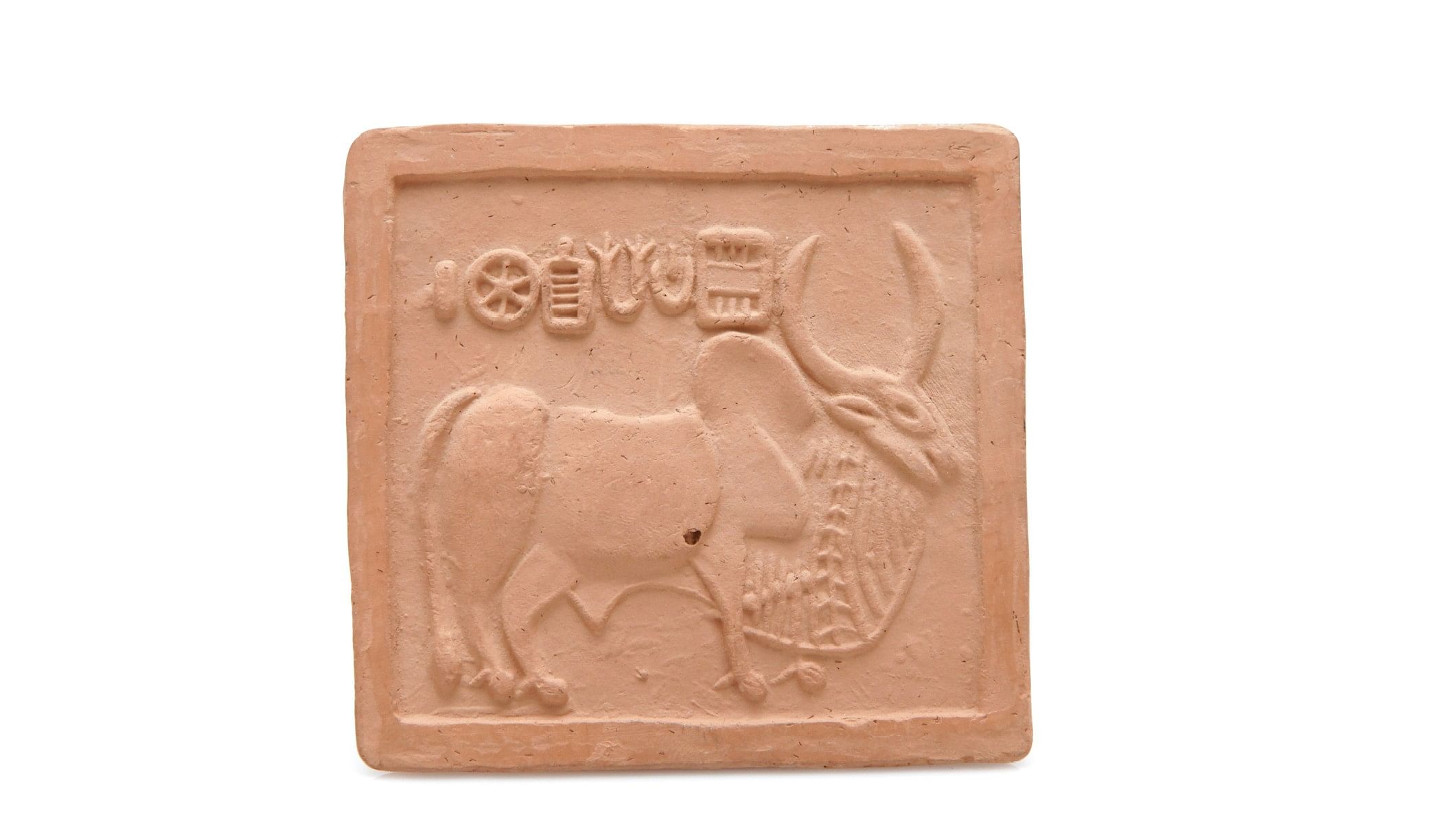
Representative image of a Harappan seal.
Credit: iStock Photo
Locals of Lodrani, a hamlet around 51 km from Dholariva, a Harappan settlement in Kutch, had begun digging in the area with the belief that there was gold buried.
However, what they ended up finding is a new Harappan settlement that experts say might date back to around 2600 BC, according to a report by Times of India.
Lodrani was actually a fortified settlement during the Harappan civilization.
Ajay Yadav and Damian Robinson, researches working with Oxford's School of Archeology, who are the leading arcchaelogists in this excavation, said that architecture at Lodrani closely resembles that of Dholariva, which is a UNESCO World Heritage site.
In an interview with TOI, Yadav said, "Villagers believed there was a medieval fortress and buried treasure. But when we examined the site, we found a Harappan settlement where life was flourishing some 4,500 years ago."
The location was officially christened Morodharo (a Gujarati word meaning less salted and drinkable water) in January. According to Yadav, it produced a significant amount of Harappan pottery, comparable to that discovered in Dholavira. The settlement appears developed from mature (2,600–1,900 BCE) to late Harappan times (1,900–1,900 BCE) to . Further research and excavation, according to archaeologists, will uncover more.
"Our most important observation is that this site and Dholavira both depended on the sea. As it's so close to the Rann (desert), it can be safely presumed that at that time what became a desert later must have been navigable," Yadav told the publication.
After false starts before, Lodrani is claiming prominence in archaeology. J P Joshi, another archaeologist, undertook a survey of the site in 1967–1968. He mentioned a Harappan site in Lodrani, but at that time, no hard proof was discovered. Experts visited Lodrani during the Dholavira excavation, which took place between 1989 and 2005, but they were left unimpressed.
However the latest discoveries have now firmly put Lodrani on the map.